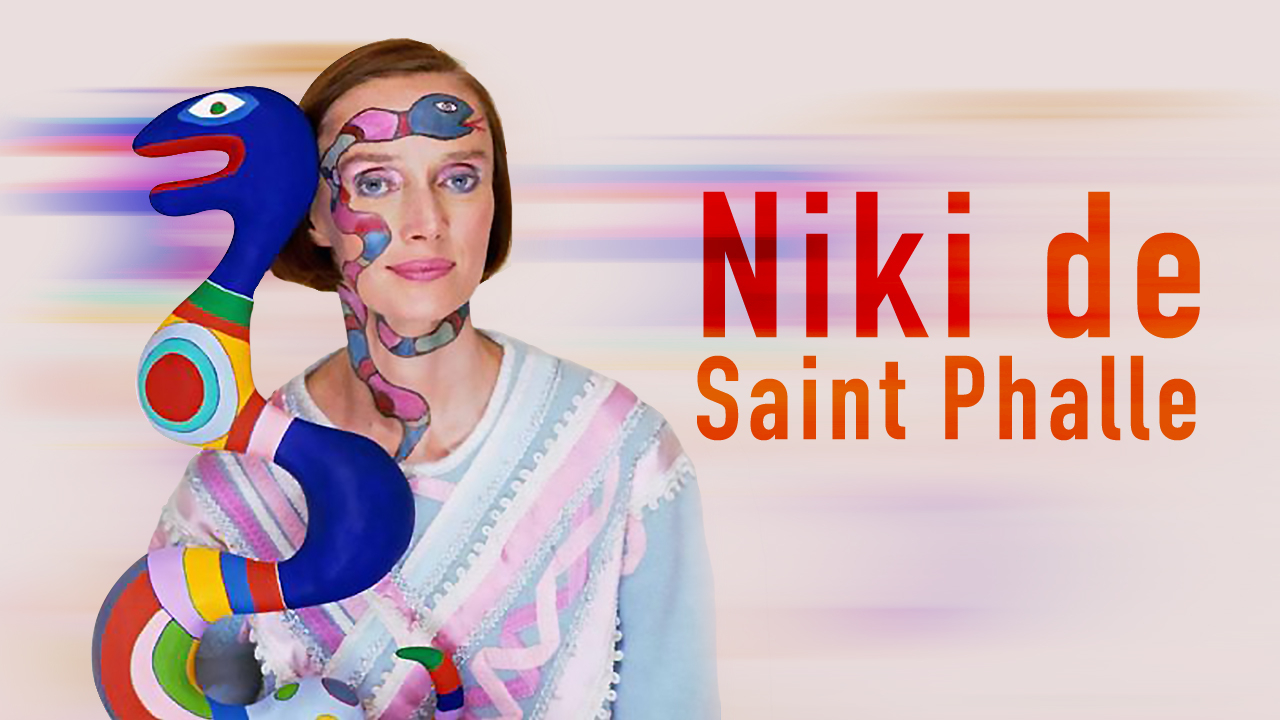March 8 marks International Women's Day. In the long struggle for gender equality, one pioneering figure stands out: French-American artist, Niki de Saint Phalle. She devoted her life to giving women a voice and expression in various art forms.
Born in 1930 in a town to the west of Paris, France, Niki suffered a traumatic childhood in a strict Catholic household. Her mother was violent and stern, and her father sexually abused her.
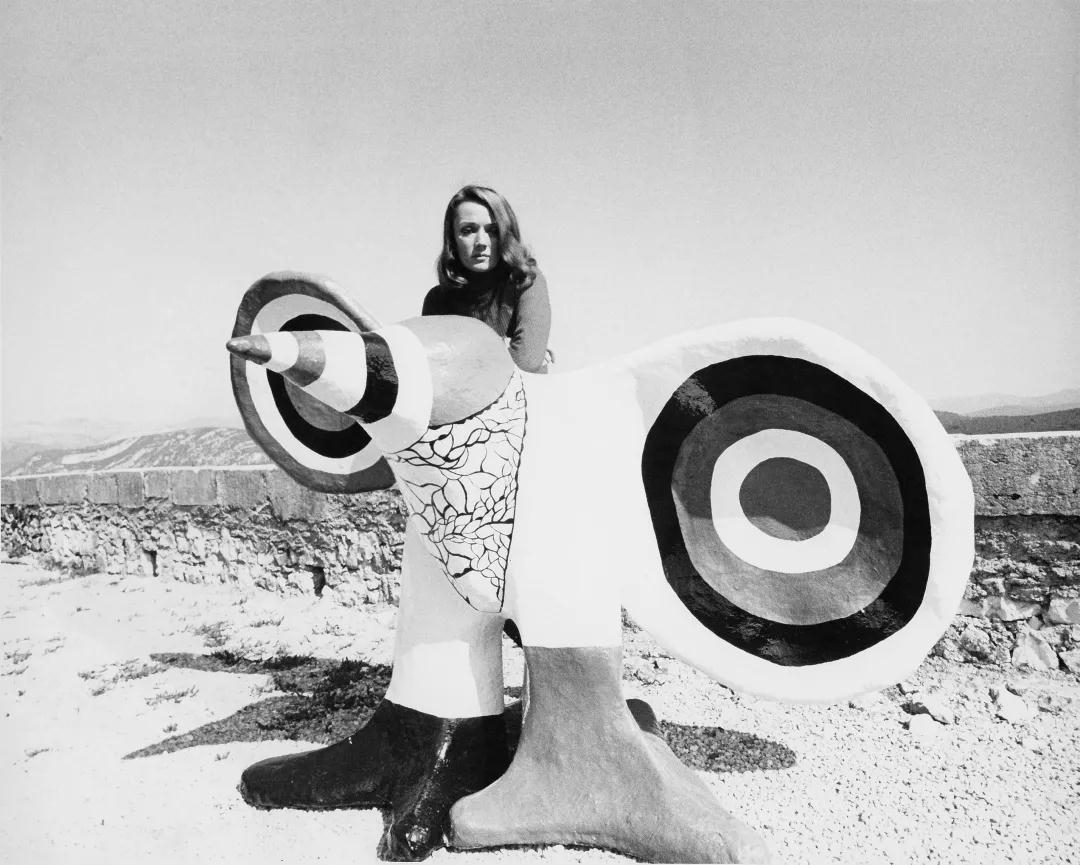
Niki de Saint Phalle standing beside a sculplture. /Photo courtesy of Niki Charitable Art Foundation
Niki de Saint Phalle standing beside a sculplture. /Photo courtesy of Niki Charitable Art Foundation
These bitter experiences made her rebellious against conservative rules and stereotypical social norms. Unable to escape, she broke down and suffered from mental health issues. As spiritual therapy, she was encouraged to create art works in a self-taught manner.
Through a retrospective exhibition called "Niki de Saint Phalle: Legendary Female Artist of the 20th Century and Her Wonderland," running until March 10, 2019, in Today Art Museum in Beijing, we can explore the artist's spiritual journey and learn about how her works stirred 20th-century society.
The shooting art
Niki was famous for her "shooting art," or "Tirs" as she called it in French, an art form that she committed to in the early 1960s.
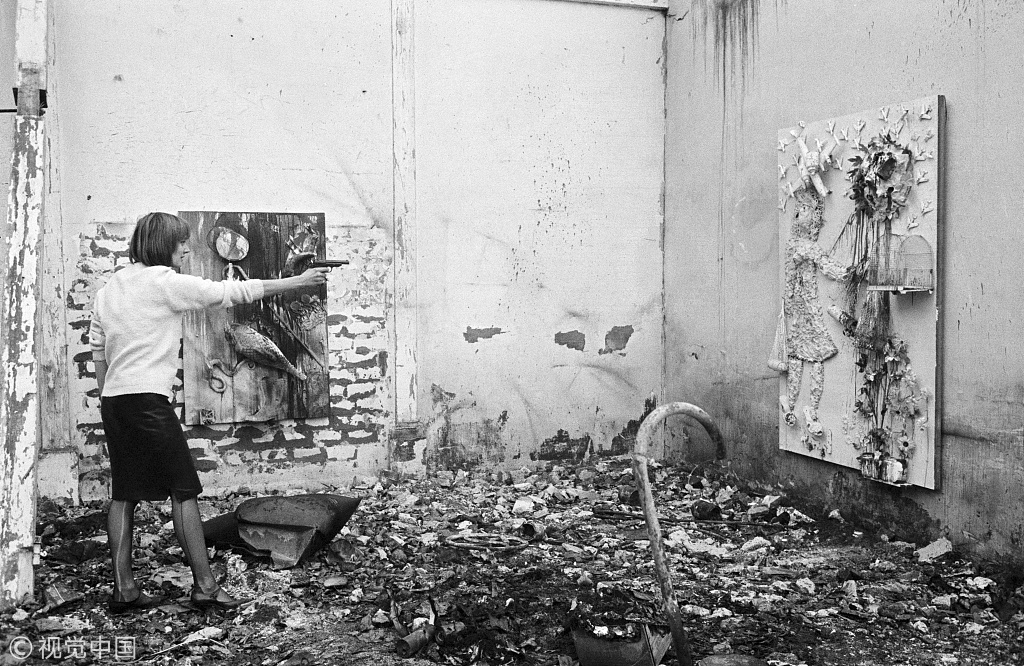
Niki works on her art piece with a gun, December 1961. /VCG Photo
Niki works on her art piece with a gun, December 1961. /VCG Photo
It required the artist to make an assemblage and shoot it with a gun until it turned into an art piece. The assemblage was made of plaster, covering a board and various colorful paints. Household items like razor blades, eggbeaters and the like were also sometimes embedded in the plaster.
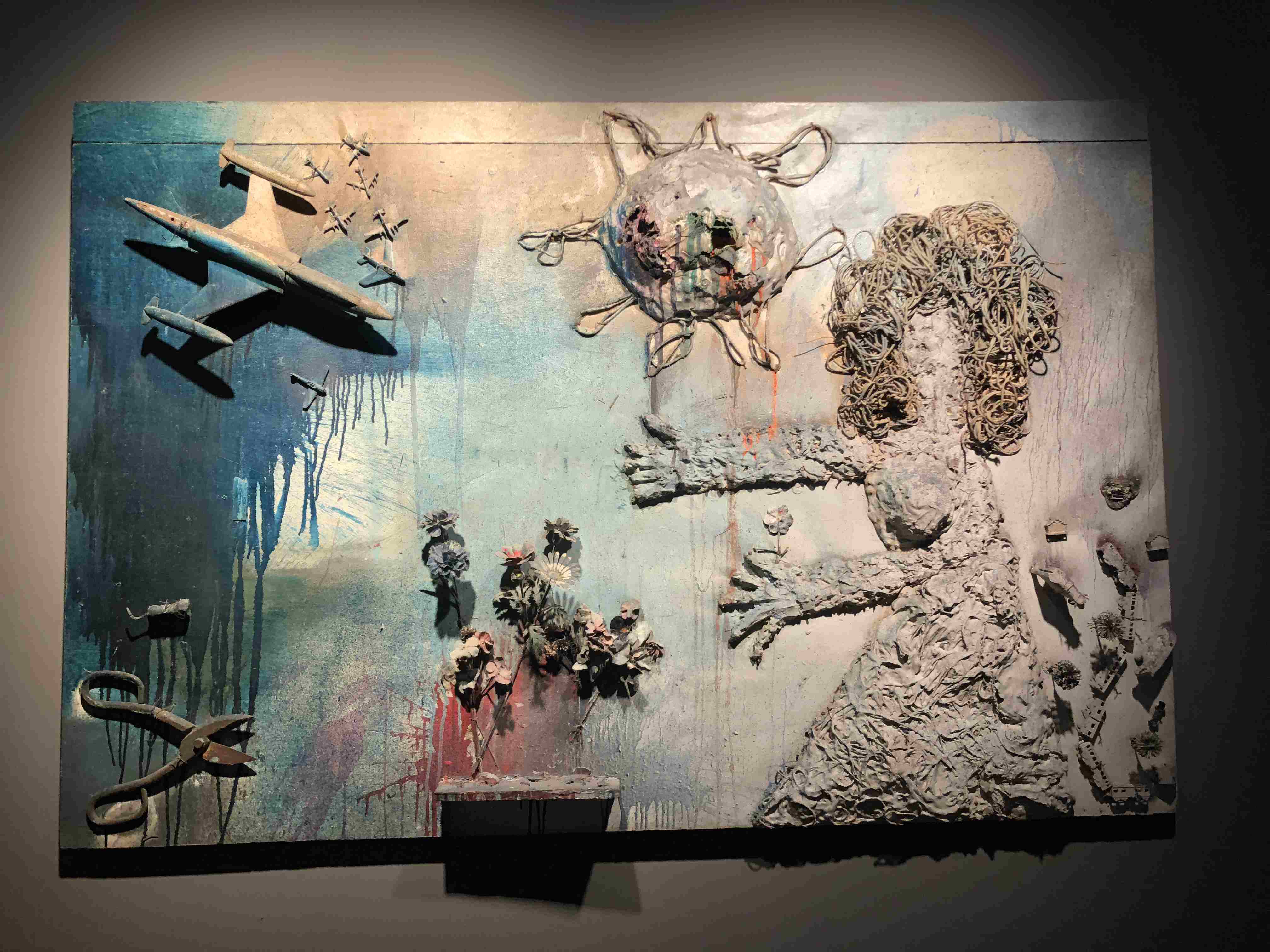
A shooting work by Niki de Saint Phalle at the exhibition in Beijing, March 3, 2019. /CGTN Photo
A shooting work by Niki de Saint Phalle at the exhibition in Beijing, March 3, 2019. /CGTN Photo
When the artist opened fire, the assemblage broke into pieces and liquids of colors "bled" out, creating the art piece, each of which was unique. The shooting art was a wordless complaint and reaction to her early experiences, and was also a rebellion against the conservative social values at that time.
The Nanas, of joy and freedom
In a transition period, Niki looked into the roles for women in her time, which were mainly limited to "mothers" and "wives." To reflect the constraint that marriage imposed to women, and provoke people's reflection on female's social status, she sculptured the "Brides." They seem unhappy, with their bodies fully burdened by babies, toys, and trivial items.
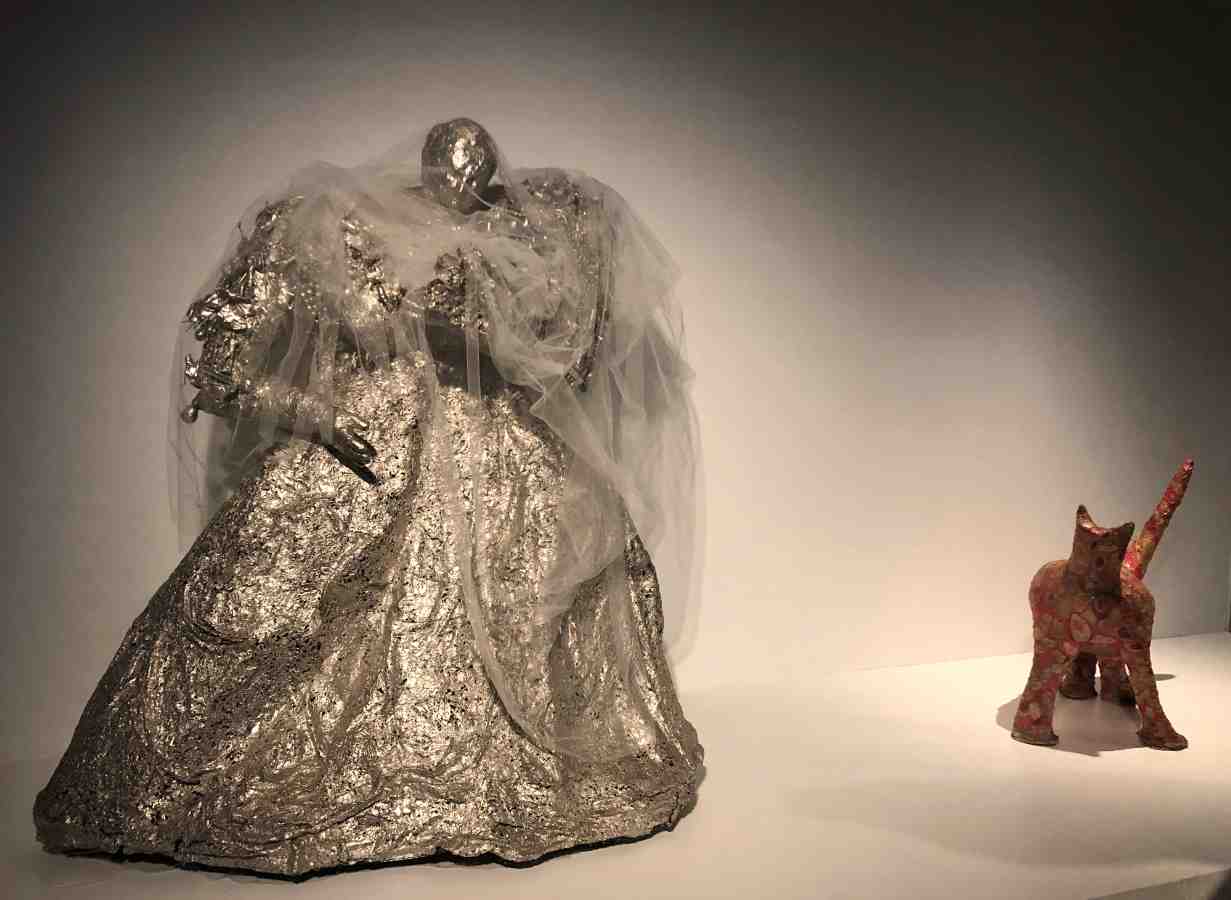
"Bride" (L) on display. /CGTN Photo
"Bride" (L) on display. /CGTN Photo
Later, her most well-known art collection, "Nanas," was created. Inspired by pregnant women, the tone for Nanas was dramatically changed. Practicing dance, handstand, or cartwheel, and brightly colored, the women-shaped sculptures expressed a feeling of joy and freedom.
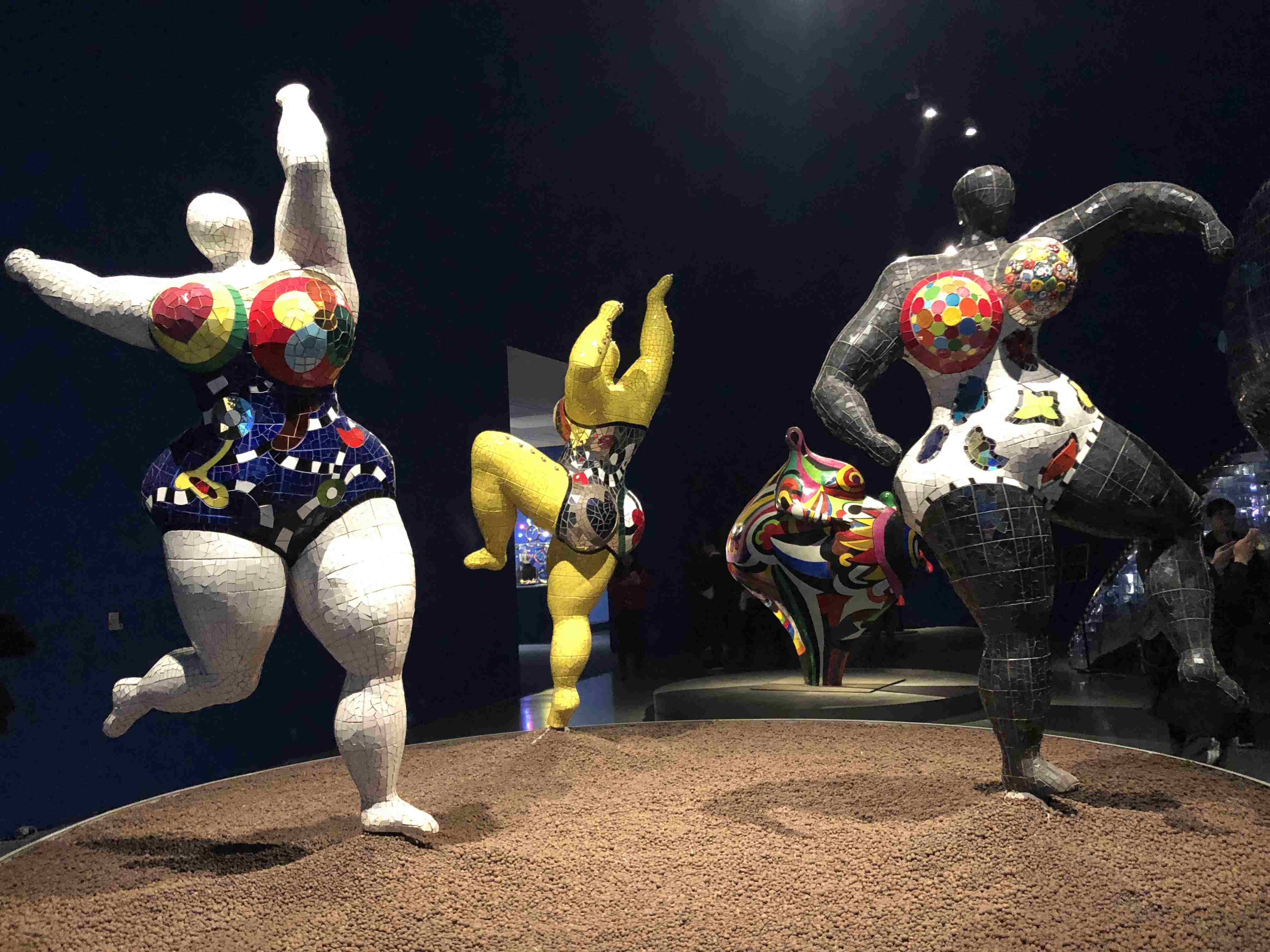
Various dancing Nanas at the exhibition, March 3, 2019. /CGTN Photo
Various dancing Nanas at the exhibition, March 3, 2019. /CGTN Photo
All Nanas were depicted in a stout fashion, as a resistance to the social expectations for women to be slim. With this she conveyed a message that women in all shapes could celebrate their curves ecstatically.
Some of the Nanas were especially big. In a
documentary, she said she'd like to make those women sculptures
of large size, since men appeared tiny in front of them.
The Tarot Garden, a land of fantasy
For most of the people, 20 years could hold numerous possibilities and changes in life.
However for Saint Phalle, it was the time she devoted for making one art piece: The Tarot Garden.
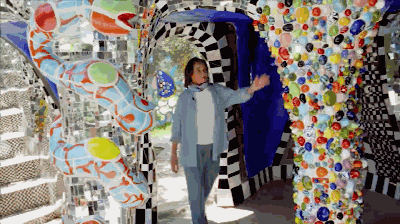
Niki de Saint Phalle walks in her Tarot Garden. /Gif courtesy of Niki Charitable Art Foundation
Niki de Saint Phalle walks in her Tarot Garden. /Gif courtesy of Niki Charitable Art Foundation
Inspired by Park Guel in Spain, the Garden of Bomarzo in Intaly, the Palais Ideal in France and other architecture of the kind, the Garden is a park of sculptures in various shapes themed the mystery of the tarot cards. The buildings can be walked through and are covered by fragmented mirrors and colorful ceramic mosaics.

Niki meets her construction team of the Tarot Garden at "Empress" in the Garden. /Gif courtesy of Niki Charitable Art Foundation
Niki meets her construction team of the Tarot Garden at "Empress" in the Garden. /Gif courtesy of Niki Charitable Art Foundation
In a documentary, she and the construction team spent a pleasant time in "Empress," a building in the shape of a woman. The artist said in a body of a woman, it felt like they were babies again.
A Chinese perspective on the status of women
According to the latest data from Catalyst, the social status of women in China has been greatly improving.
Up till 2017, the gender gap for higher education in China has been diminished. The rate of adults in the age of 25-34 who received higher education is the same as male and female: 18 percent.
Besides, Chinese women's participation in the workforce is also among the highest in the Asia-pacific region.
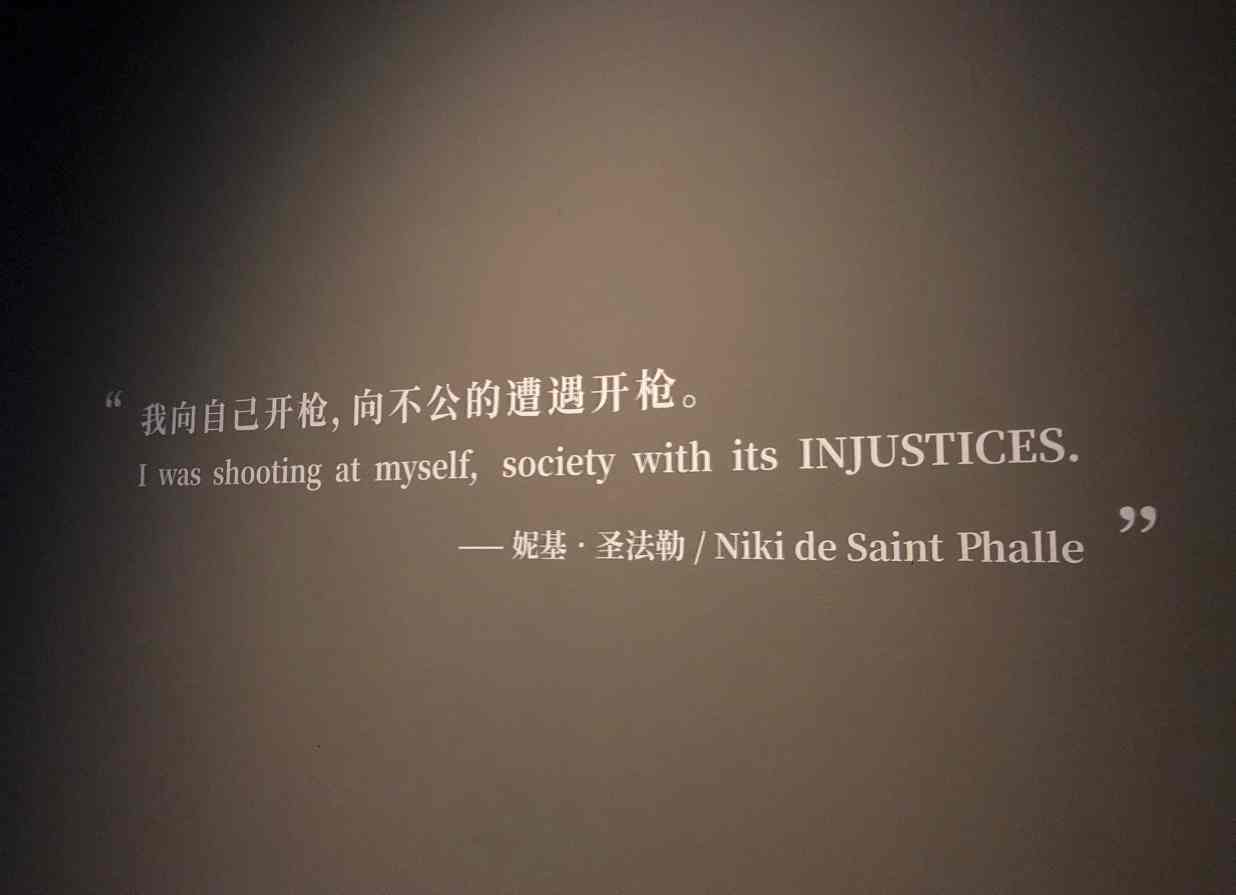
A quote of Niki de Saint Phalle at the exhibition, March 3, 2019. /CGTN Photo
A quote of Niki de Saint Phalle at the exhibition, March 3, 2019. /CGTN Photo
However, women's participation in leading roles is still low, and gender inequality in the workforce still exists. Most importantly, in regards to changing negative cultural norms and stereotypes, we still have a long way to go.
In a media interview, Yong Mei, winner of the Silver Bear for Best Actress at the Berlinale last month for "So Long, My Son," said she was invited to act as the wife of a scientist, but believed a middle-aged woman can be much more than being a good wife and mother.
"Why always as the wife of a scientist? Why not a female scientist?" she challenged.
(Top photo: Niki de Saint Phalle. /Photo courtesy of Niki Charitable Art Foundation, background decorations designed by Yin Yating)

